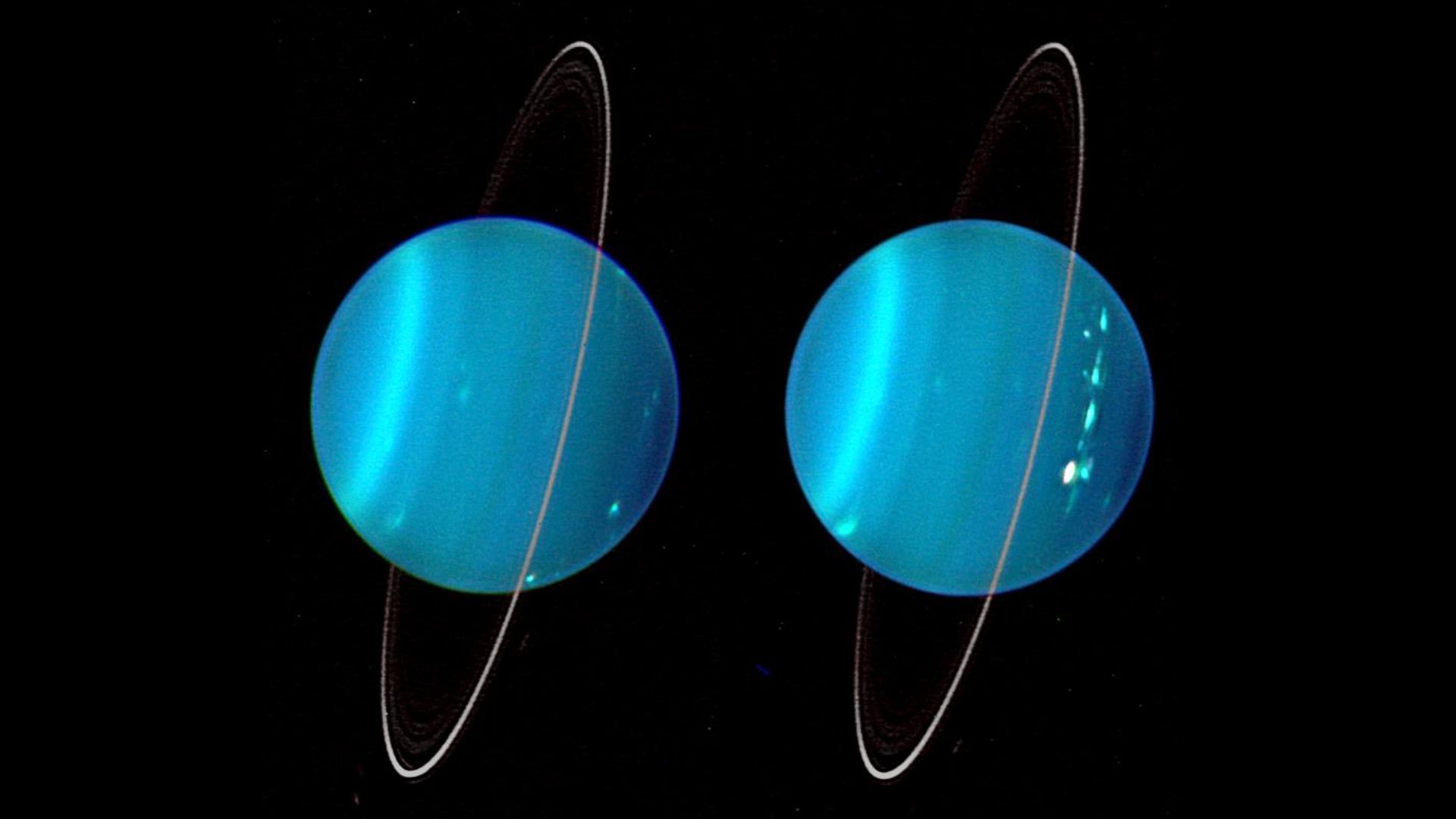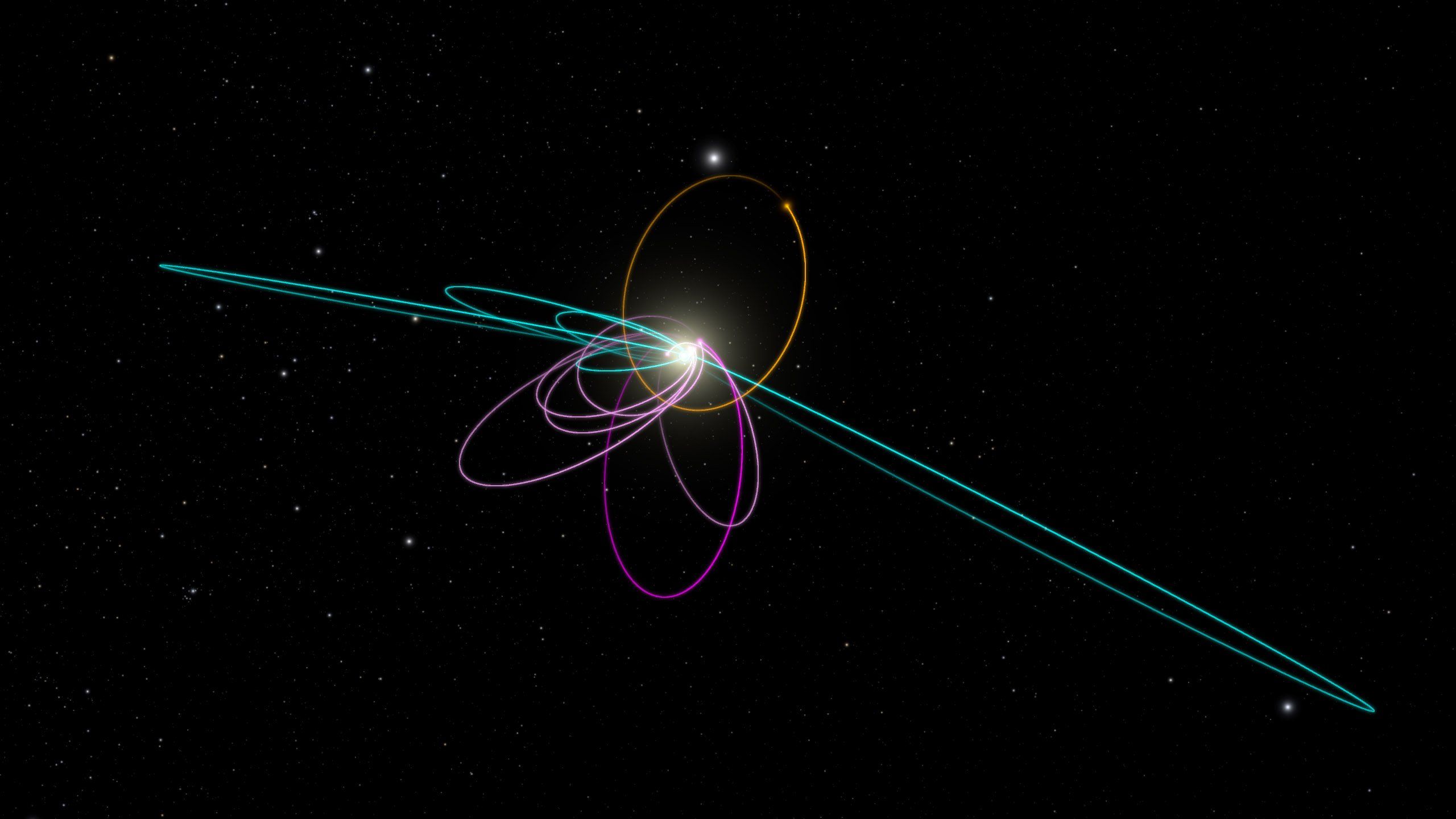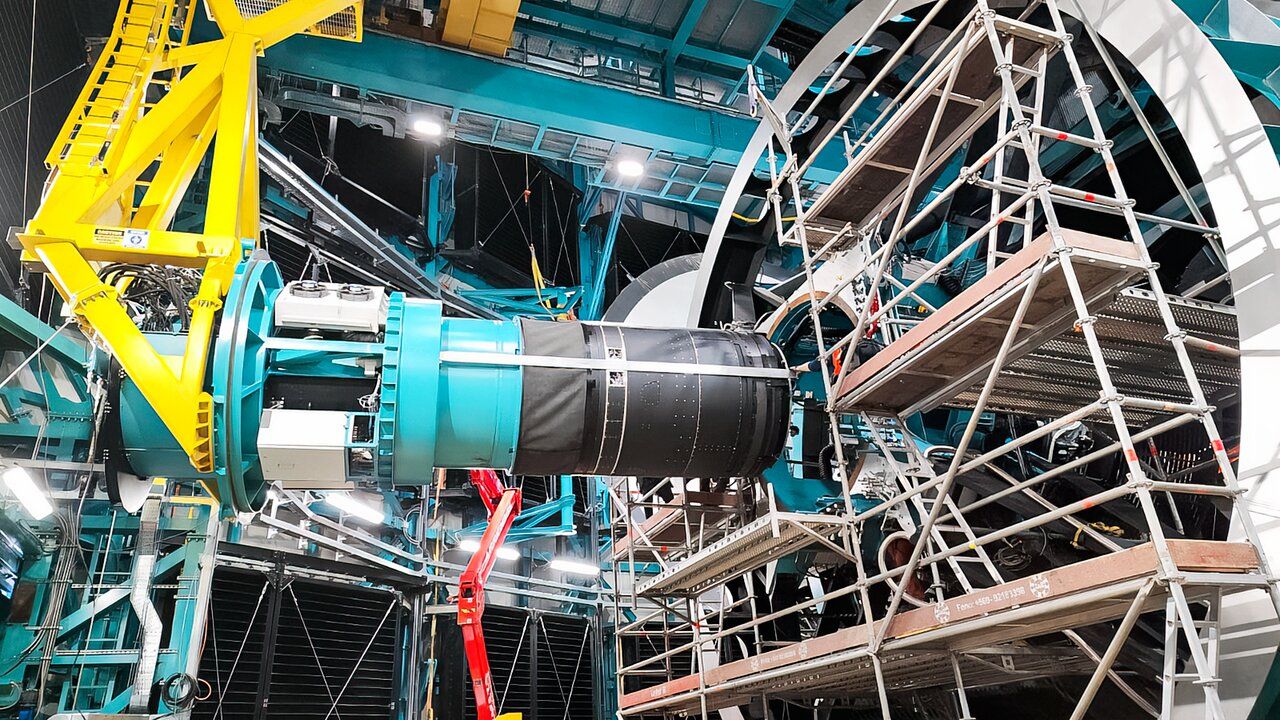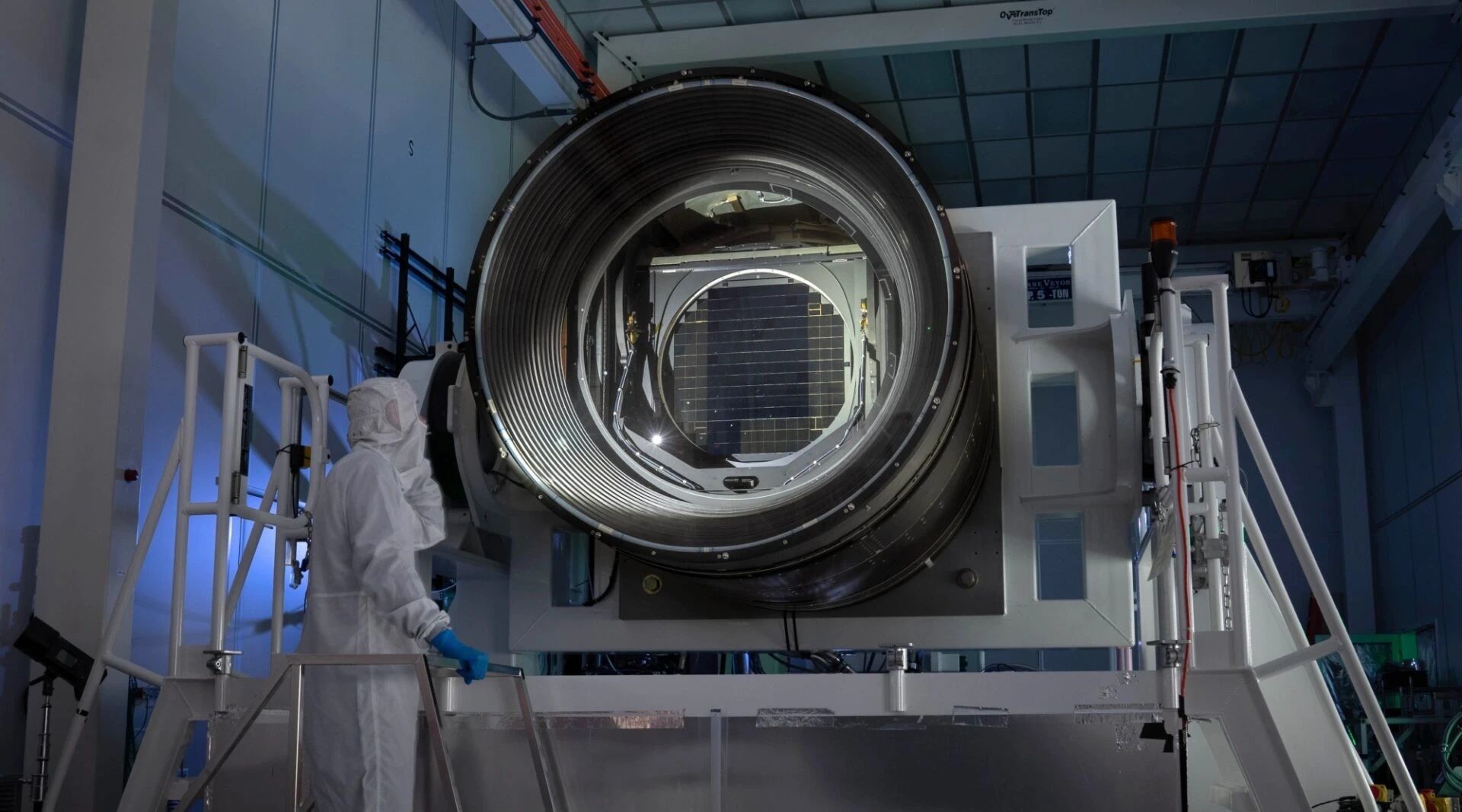Pluto was long considered the ninth planet of the solar system, but changes to the definition of planet got it kicked out of the planetary club. Now, scientists are close to finally answering a pressing question: Is there another planet hiding out there?
Why Do Some Scientists Think Planet Nine Exists?
In the 19th century, scientists studying the planet Uranus noticed something weird: it’s orbit was slightly “wrong.” After surveying it for nearly a century, it wasn’t quite where it should have been. The only explanation was that something was ever-so-slightly upsetting Uranus’s orbit.
After a herculean mathematical effort, astronomers were able to use the orbital discrepancy to identify where the yet undiscovered something was. When they turned their telescopes to that location, they discovered the ice giant Neptune.
That made Neptune the first planet to be discovered by mathematical prediction.
Something similar seems to be happening with Planet Nine. When you study the motion of Extreme Trans-Neptunian Objects (ETNOs), which are just objects way out beyond Neptune, you find that many of them have orbits that tend to clump together in a strange way. On their own, you’d expect their orbits to be random, but they’re not.
That suggests that another object, like a large planet in the far reaches of the solar system, is exerting its gravitational influence on them, making them sync up.
All the observations and theory taken together provide decent evidence that there is a ninth large planet in our solar system.
Why Is Planet Nine So Hard to Find?
When we think of the planets, we think of places like Mars or Jupiter, bright objects that are relatively close to the Sun.
Even Pluto, which previously held the record for the most distant planet, occasionally crossed the orbit of Neptune, temporarily making Neptune the most distant planet. It is also visible through even moderately sized telescopes.
However, just because we live in a relatively crowded planetary neighborhood doesn’t mean planets can’t exist much further away than the ones we’re familiar with. That is the problem with the elusive Planet Nine.
If it exists, it is really far out there, and it dim—almost impossible to detect.
Where is Planet Nine Hiding?
If a ninth planet exists, the best guess to date suggests that its orbit keeps it between 200 and 370 astronomical units (AU) away from the Sun. That is more than 18 billion miles and 200 times greater than the distance between the Earth and the Sun. Because of its distance from the Sun, its orbit would be extremely long: one year on Planet Nine would be tens of thousands of Earth years.
If it exists, it would take light—the fastest thing in the universe—some 26 hours to reach it.
Voyager 1, which was launched by NASA more than 47 years ago, is only 167 AU away from the Sun. Even if it were headed directly for Planet Nine (which is exceedingly unlikely), could be less than half way there!
Even if we spotted Planet Nine today and immediately started building the most advanced probe we could, it likely wouldn’t get there for several decades.
A paper published in the Astronomical Journal in 2024 managed to eliminate some 78% of the existing space where Planet Nine could exist, which means scientists are closing in. To finish the search, they are going to use one of the most advanced telescopes ever built: The Vera C. Rubin Observatory.
The Vera C. Rubin Observatory Could Spot Planet Nine
The Rubin Observatory uses a massive, 8.4 meter (about 25 feet) wide telescope called the Simonyi Survey Telescope.
The camera that will be used by the Rubin Observatory is every bit as impressive as the telescope itself. The LSST Camera is 1.65 meters wide, 3 meters long, and has a 3.2 gigapixel sensor. When it is active, it’ll be able to take one 3.2 gigapixel image once every two seconds or so.
The sky survey is set to run for 10 years and generate hundreds of petabytes of data. If we’re very lucky, Planet Nine will be captured in these images.
The Rubin Observatory is set to begin operation later in 2025, and it could only take a few months for scientists to collect and analyze enough data to figure out where Planet Nine is lurking.
What is Planet Nine Like?
No one knows for sure what Planet Nine is like, though there have been some educated guesses made.
It is thought that Planet Nine will be somewhere between the size of Earth and Neptune, and a mass somewhere between 7 and 10 times the mass of Earth seems to be the most likely range.
At that size, there are a ton of interesting questions about what the planet’s composition is actually like. Is it a frigid Super Earth, made mostly of rock? Is it a small gassy planet more similar to Neptune?
Determining its makeup is going to be a challenge, though scientists’ experience hunting exoplanets may provide a way to approach the problem. When a planet passes in front of a star, the light from the star has to pass through the atmosphere of the planet before it can reach us. That has allowed astronomers and astrophysicists to identify chemicals in the atmospheres of planets light years away, and there is every chance the same technique could be used to study the atmosphere of Planet Nine.
Once we’ve found and studied Planet Nine, we’re stuck with a problem of a different sort: what do we name it? Historically, most planet names have come from the pantheon of Greek or Roman gods, however there is no guarantee that pattern will continue. The internet collectively seems likely to nominate “Planet McPlanetFace.” Ultimately, the decision lies with the International Astronomical Union.




